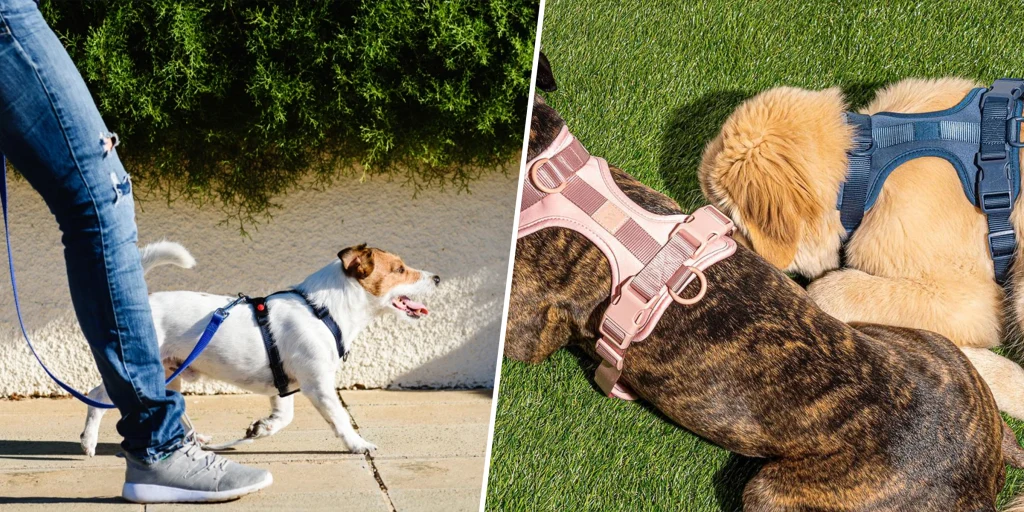Ah, the great outdoors! The allure of fresh air and the thrill of exploration are tempting for both humans and pets alike. But, before you let your furry friend take that leap, have you considered the significance of leash training and outdoor safety? Remember, it’s not just about the walk; it’s about ensuring every step is safe and enjoyable. Let’s dive deep.
Why Leash Training is Essential
Ever seen a child let loose in a toy store? The excitement is unparalleled, but so is the chaos! Similarly, an untrained pet outdoors is like that child, overwhelmed and unpredictable. Proper leash training provides structure, security, and a mutual understanding between you and your pet.
Steps to Effective Leash Training
Training doesn’t have to be a Herculean task. Like learning to ride a bike, it’s all about balance, understanding, and progression.
Beginning with Basics
Start indoors. Familiar surroundings reduce distractions, making it easier for pets to focus. Use treats and positive reinforcement to teach basic commands like “sit,” “stay,” and “come.” The aim? Build trust.
Introducing the Leash
Make the leash a positive item. Let your pet sniff it, play with it, and get used to its presence. Attach the leash and practice indoor walks, ensuring there’s no fear or reluctance.
Progressive Outdoor Training
Begin with short, controlled outdoor walks. As your pet adjusts, gradually increase the duration and explore new environments. Remember the saying, “Rome wasn’t built in a day”? Patience is key.
Mastering Commands and Cues
Commands guide your pet, and cues help them predict your actions. Whether it’s a tug to signal “stop” or a vocal cue for “heel,” consistency is the golden rule.
Understanding the Dangers of Untrained Walks
Common Outdoor Hazards
From speeding cars to aggressive animals, the risks are real. An untrained pet might chase a squirrel onto a busy road or ingest something harmful. In these scenarios, a leash isn’t just a tool; it’s a lifeline.
Emotional and Behavioral Implications
Unpredictable situations can traumatize pets, making them anxious or aggressive. Proper training ensures they react calmly, even when faced with the unexpected.
Importance of Insurance for Pet Owners
Ever heard the saying, “Better safe than sorry”? Insurance embodies this sentiment. Know more here about how does pet insurance work
Financial Protection
Accidents happen. From veterinary bills after mishaps to liability coverage in case your pet injures someone, insurance ensures your wallet doesn’t bear the brunt.
Peace of Mind
Knowing you’re covered allows you to enjoy outdoor adventures without the looming worry of “what ifs.”
Navigating through Unexpected Situations
Lost your pet? Insurance can cover advertising costs and even reward money. It’s like having a safety net, always ready to catch you.
Expert Tips for Safe Outdoor Adventures
- Choose the right leash and collar, tailored to your pet’s size and temperament.
- Avoid peak hours, opting for walks during quieter times.
- Always be alert and avoid distractions like smartphones.
The Role of Consistency and Patience
Just like a dance, leash training requires both the pet and the owner to be in sync. The recipe for success? Equal parts consistency, patience, and love.
Conclusion
Leash training and outdoor safety aren’t just about rules; they’re about fostering a bond that stands the test of time and challenges. By understanding the importance of training and the security insurance offers, you’re not just taking a walk; you’re embarking on a journey filled with countless memories and shared experiences.
FAQs
- Is it ever too late to start leash training?
No, while it’s easier to train puppies, older dogs can also be trained with patience and consistency. - How long should the leash training sessions be?
Start with short sessions of 5-10 minutes and gradually increase as your pet becomes more comfortable. - What if my pet is resistant to the leash?
It’s essential to make the leash a positive experience. Use treats and positive reinforcement, ensuring the pet doesn’t associate the leash with fear or punishment. - Do all pets need insurance?
While it’s a personal choice, insurance provides a safety net against unforeseen situations, making it a wise consideration for all pet owners. - Can I let my pet off-leash once trained?
Only in designated areas and if you’re confident in their recall skills. Remember, safety first!
Also Read: California bill would regulate pet insurance







